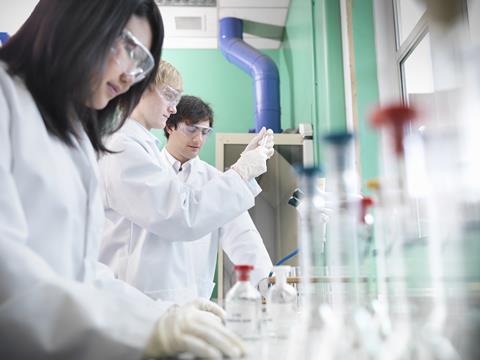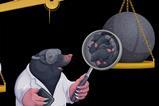Could your students complete a practical without your input?
A South African colleague of mine fondly reminisces about his exams in physical science, which were simply a scientific question to investigate and report on within three hours; initially terrifying but also an opportunity to be examined in science, by actually doing science. How well do you think current GCSE and A-level students would cope?
When teachers talk about why they do practical work in lessons, most say to motivate students, because chemistry is a practical subject, or to underpin the theory. There has been a growing emphasis on the latter in the literature: practical work should help students understand the conceptual ideas they are learning.

Practical work should be meaningful in terms of students’ learning. But I am concerned that while the emphasis is moving from teacher-led ‘recipe’ practicals to teacher-led ‘lots of embedded theory’ practicals, we still haven’t had the courage to go down the student-led, open-ended, practical route.
Why should we?
I hope I needn’t dwell on why student investigations are sometimes a great idea: it means students taking ownership of their practical work, testing their understanding of practical skills and the underlying theory they are investigating at the level they are at, and preparing them for what the study of chemistry is actually like.
It can also be extremely easy to set up, leaving you with more time for everything else teachers need to do. I’ve asked year 10 students ‘What’s the percentage by mass of magnesium hydroxide in milk of magnesia?’, handed over the bottle I picked up in Boots on my walk to work, and pointed to the apparatus around the lab. They worked hard, learned a lot and got pretty good results.
It can also be extremely easy to set up, leaving you with more time for everything else teachers need to do. I’ve asked year 10 students ‘What’s the percentage by mass of magnesium hydroxide in milk of magnesia?’, handed over the bottle I picked up in Boots on my walk to work, and pointed to the apparatus stowed around the lab. They worked hard, learned a lot and got pretty good results.
Download instructions for these student-led practicals:
Why don’t we?
The emphasis on health and safety in public dialogue has made teachers, and schools, more afraid of creative practical work: terrified that students will add two chemicals together the teacher didn’t account for and cause an explosion. But, actually, most practical ideas we wish students to investigate don’t include many chemicals with sufficient hazard to cause concern. Provided we teach students how to handle chemicals and apparatus responsibly in the first place.
Which leads into my second point: students will only have the lab skills to carry out investigative work themselves, if these skills have been embedded throughout their chemistry education. I recently set year 11 a task to identify the correct equation for the thermal decomposition of KHCO3: they heated it safely with a crucible, weighed by difference, and knew how to avoid errors such as getting soot onto the crucible. Heating magnesium in a crucible a year earlier and discussing the possible errors and safety issues had prepared them for this year’s open-ended task.
Another major teacher fear is students learning the ‘wrong’ thing. For example, we would ignore that bromine water gets paler as potassium chloride is added, as it gets more dilute, but students might suggest the bromine displaces the chloride. Or in my milk of magnesia titration where the end point is disguised by the sparing solubility of the magnesium hydroxide. But unless students have the opportunity to connect their own observations to the theory, how can they be expected to develop their own observational filters, so they can make more sophisticated scientific deductions in future?
The final concern is that there’s no time for investigation. My response is that if students are taught the skills through their teacher-led practical work, open-ended tasks needn’t take longer than following a recipe. Remember, an investigation doesn’t usually need three repeats for the results to be meaningful!
Getting started
Creating an entirely student-led practical curriculum is too far: students need to develop the skills from their teachers. However, I advocate looking at the entire course, identifying a number of practicals which you would like to see student-led (one a term would be a good target), and redesigning other practicals to ensure mastery of the skills students will need when they take the reins. For example, at A-level students could synthesise and purify an ester independently. Other practicals, such as extraction of limonene, dehydration of cyclohexanol, distillation and reflux of an alcohol, can all be used to develop the skills and embed the theory necessary to build up to the ‘goal’ practical.
So, when I say reinventing the chemistry practical, what I mean is reinventing its purpose, making it educative to an end which celebrates theory, but also how to investigate ideas.
Emily Seeber is a chemistry teacher and head of sciences at Bedales School in Hampshire
Download instructions for student-led practicals from the website: URL TO COME
Downloads
Investigation into the decomposition of KHCO3: worksheet
Word, Size 53.41 kbInvestigation into the decomposition of KHCO3: worksheet
PDF, Size 50.98 kbInvestigation into the percentage by mass of magnesium hydroxide in milk of magnesia: worksheet
Word, Size 52.88 kbInvestigation into the percentage by mass of magnesium hydroxide in milk of magnesia: worksheet
PDF, Size 49.3 kb















No comments yet